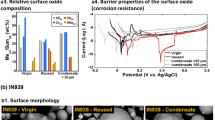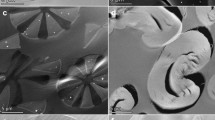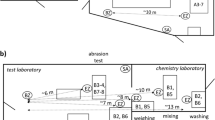Abstract
In this study, the characteristics of airborne particles generated during injection molding and grinding processes of carbon nanotube reinforced polycarbonate composites (CNT-PC) were investigated. Particle number concentration, size distribution, and morphology of particles emitted from the processes were determined using real-time particle sizers and transmission electron microscopy. The air samples near the operator’s breathing zone were collected on filters and analyzed using scanning electron microscope for particle morphology and respirable fiber count. Processing and grinding during recycling of CNT-PC released airborne nanoparticles (NPs) with a geometric mean (GM) particle concentration from 4.7 × 103 to 1.7 × 106 particles/cm3. The ratios of the GM particle concentration measured during the injection molding process with exhaust ventilation relative to background were up to 1.3 (loading), 1.9 (melting), and 1.4 (molding), and 101.4 for grinding process without exhaust ventilation, suggesting substantial NP exposures during these processes. The estimated mass concentration was in the range of 1.6–95.2 μg/m3. Diverse particle morphologies, including NPs, NP agglomerates, particles with embedded or protruding CNTs and fibers, were observed. No free CNTs were found during any of the investigated processes. The breathing zone respirable fiber concentration during the grinding process ranged from non-detectable to 0.13 fiber/cm3. No evidence was found that the emissions were affected by the number of recycling cycles. Institution of exposure controls is recommended during these processes to limit exposures to airborne NPs and CNT-containing fibers.
This is a preview of subscription content, access via your institution
Access options
Subscribe to this journal
Receive 6 print issues and online access
$259.00 per year
only $43.17 per issue
Buy this article
- Purchase on Springer Link
- Instant access to full article PDF
Prices may be subject to local taxes which are calculated during checkout







Similar content being viewed by others
References
Harris PJF . Carbon nanotube composites. International Materials Reviews 2004; 49: 31–43.
Khare R, Bose S . Carbon nanotube based composites- a review. J Mine Mate Char Eng 2005; 4: 31–46.
Pham GT, Park YB, Wang S, Liang Z, Wang B, Zhang C et al. Mechanical and electrical properties of polycarbonate nanotube buckypaper composite sheets. Nanotechnology 2008; 19: 325705.
Pötschke P, Abdel-Goad M, Alig I, Dudkin S, Lellinger D . Rheological and dielectrical characterization of melt mixed polycarbonate-multiwalled carbon nanotube composites. Polymer 2004; 45: 8863–8870.
Pötschke P, Bhattacharyya AR, Janke A . Carbon nanotube-filled polycarbonate composites produced by melt mixing and their use in blends with polyethylene. Carbon 2004; 42: 965–969.
De Volder M, Tawfick S, Baughman R, Hart A . Carbon nanotubes: present and future commercial applications. Science 2013; 339: 535–539.
Kingston C, Zepp R, Andrady A, Boverhof D, Fehir R, Hawkins D et al. Release characteristics of selected carbon nanotube polymer composites. Carbon 2014; 68: 33–57.
Liu Y, Zhao Y, Sun B, Chen C . Understanding the toxicity of carbon nanotubes. Acc Chem Res 2013; 46: 702–713.
Ma-Hock L, Treumann S, Strauss V, Brill S, Luizi F, Mertler M et al. Inhalation toxicity of multiwall carbon nanotubes in rats exposed for 3 months. Toxicol Sci 2009; 112: 468–481.
Muller L, Riediker M, Wick P, Mohr M, Gehr P, Rothen-Rutishauser B . Oxidative stress and inflammation response after nanoparticle exposure: differences between human lung cell monocultures and an advanced three-dimensional model of the human epithelial airways. Journal of the Royal Society, Interface/the Royal Society 2010; 7 (Suppl 1): S27–S40.
Palomaki J, Valimaki E, Sund J, Vippola M, Clausen PA, Jensen KA et al. Long, needle-like carbon nanotubes and asbestos activate the NLRP3 inflammasome through a similar mechanism. ACS Nano 2011; 5: 6861–6870.
Thurnherr T, Brandenberger C, Fischer K, Diener L, Manser P, Maeder-Althaus X et al. A comparison of acute and long-term effects of industrial multiwalled carbon nanotubes on human lung and immune cells in vitro. Toxicol Lett 2011; 200: 176–186.
Aillon KL, Xie Y, El-Gendy N, Berkland CJ, Forrest ML . Effects of nanomaterial physicochemical properties on in vivo toxicity. Adv Drug Deliv Rev 2009; 61: 457–466.
Bussy C, Pinault M, Cambedouzou J, Landry MJ, Jegou P, Mayne-L'hermite M et al. Critical role of surface chemical modifications induced by length shortening on multi-walled carbon nanotubes-induced toxicity. Part Fibre Toxicol 2012; 9: 46.
Hsieh SF, Bello D, Schmidt DF, Pal AK, Rogers EJ . Biological oxidative damage by carbon nanotubes: fingerprint or footprint? Nanotoxicology 2012; 6: 61–76.
Patel HJ, Kwon S . Length-dependent effect of single-walled carbon nanotube exposure in a dynamic cell growth environment of human alveolar epithelial cells. J Expo Sci Environ Epidemiol 2013; 23: 101–108.
Warheit DB, Borm PJ, Hennes C, Lademann J . Testing strategies to establish the safety of nanomaterials: conclusions of an ECETOC workshop. Inhal Toxicol 2007; 19: 631–643.
Wick P, Manser P, Limbach LK, Dettlaff-Weglikowska U, Krumeich F, Roth S et al. The degree and kind of agglomeration affect carbon nanotube cytotoxicity. Toxicol Lett 2007; 168: 121–131.
Froggett SJ, Clancy SF, Boverhof DR, Canady RA . A review and perspective of existing research on the release of nanomaterials from solid nanocomposites. Parti Fibre Toxicol 2014; 11: 17.
Nowack B, David RM, Fissan H, Morris H, Shatkin JA, Stintz M et al. Potential release scenarios for carbon nanotubes used in composites. Environ Int 2013; 59: 1–11.
Schlagenhauf L, Nüesch F, Wang J . Release of carbon nanotubes from polymer nanocomposites. Fibers 2014; 2: 108–127.
Bello D, Hsieh S-F, Schmidt D, Rogers E . Nanomaterials properties vs. biological oxidative damage: implications for toxicity screening and exposure assessment. Nanotoxicology 2009; 3: 249–261.
Pal AK, Hsieh S-F, Khatri M, Isaacs JA, Demokritou P, Gaines P et al. Screening for oxidative damage by engineered nanomaterials: a comparative evaluation of FRAS and DCFH. J Nanopart Res 2014; 16: 2167.
Sun B, Wang X, Ji Z, Li R, Xia T . NLRP3 inflammasome activation induced by engineered nanomaterials. Small 2013; 9: 1595–1607.
Bello D, Martin J, Santeufemio C, Sun Q, Lee Bunker K, Shafer M et al. Physicochemical and morphological characterisation of nanoparticles from photocopiers: implications for environmental health. Nanotoxicology 2013; 7: 989–1003.
NIOSH.. Current Intelligence Bulletin 65: Occupational exposure to carbon nanotubes and nanofibers, DHHS (NIOSH) Publication No. 2013-145. Atlanta, GA: US National Institute for Occupational Safety and Health 2013. Available at: http://www.cdc.gov/niosh/docs/2013-145/pdfs/2013-145.pdf.
Dahm MM, Evans DE, Schubauer-Berigan MK, Birch ME, Deddens JA . Occupational exposure assessment in carbon nanotube and nanofiber primary and secondary manufacturers: mobile direct-reading sampling. Ann Occup Hyg 2013; 57: 328–344.
Rasmussen PE, Avramescu M-L, Jayawardene I, Gardner HD . Detection of carbon nanotubes in indoor workplaces using elemental impurities. Environ Sci Technol 2015; 49: 12888–12896.
Fleury D, Bomfim JAS, Vignes A, Girard C, Metz S, Muñoz F et al. Identification of the main exposure scenarios in the production of CNT-polymer nanocomposites by melt-moulding process. Journal of Cleaner Production 2013; 53: 22–36.
Unwin J, Coldwell MR, Keen C, McAlinden JJ . Airborne emissions of carcinogens and respiratory sensitizers during thermal processing of plastics. Ann Occup Hyg 2013; 57: 399–406.
Ogura I, Kotake M, Shigeta M, Uejima M, Saito K, Hashimoto N et al. Potential release of carbon nanotubes from their composites during grinding. J Phys Conf Ser 2013; 429: 012049.
Methner M, Crawford C, Geraci C . Evaluation of the potential airborne release of carbon nanofibers during the preparation, grinding, and cutting of epoxy-based nanocomposite material. J Occup Environ Hyg 2012; 9: 308–318.
Bello D, Wardle B, Yamamoto N, Guzman deVilloria R, Garcia E, Hart A et al. Exposure to nanoscale particles and fibers during machining of hybrid advanced composites containing carbon nanotubes. J Nanopart Res 2009; 11: 231–249.
Bello D, Wardle BL, Zhang J, Yamamoto N, Santeufemio C, Hallock M et al. Characterization of exposures to nanoscale particles and fibers during solid core drilling of hybrid carbon nanotube advanced composites. Int J Occup Environ Health 2010; 16: 434–450.
Zhang J . Impact of recycling on carbon nanotube filled polymers, Doctoral Thesis University of Massachusetts Lowell. 2015.
Köhler AR, Som C, Helland A, Gottschalk F . Studying the potential release of carbon nanotubes throughout the application life cycle. Journal of Cleaner Production 2008; 16: 927–937.
Schlagenhauf L, Chu B, Buha J, Nueesch F, Wang J . Release of carbon nanotubes from an epoxy-based nanocomposite during an abrasion process. Envion Sci Technol 2012; 46: 7366–7372.
Golanski L, Guiot A, Pras M, Malarde M, Tardif F . Release-ability of nano fillers from different nanomaterials (toward the acceptability of nanoproduct). J Nanopart Res 2012; 14: 1–9.
Mazzuckelli LF, Methner MM, Birch ME, Evans DE, Ku BK, Crouch K et al. Identification and characterization of potential sources of worker exposure to carbon nanofibers during polymer composite laboratory operations. J Occup Environ Hyg 2007; 4: D125–D130.
Boonruksa P, Bello D, Zhang J, Isaacs JA, Mead JL, Woskie SR . Characterization of potential exposures to nanoparticles and fibers during manufacturing and recycling of carbon nanotube reinforced polypropylene composites. Ann Occup Hyg 2016; 60: 40–55.
Lee BP, Li YJ, Flagan RC, Lo C, Chan CK . Sizing characterization of the fast-mobility particle sizer (FMPS) against SMPS and HR-ToF-AMS. Aerosol Science and Technology 2013; 47: 1030–1037.
Acknowledgements
This research was supported by the NSF Grants 120329 and 0425826 and in part by a seed grant from the UC Center for Laboratory Safety. We are grateful to Dr. Earl Ada for his assistance with TEM and SEM analysis, and Dr. Rebecca Gore for her advice with statistical analysis. We also would like to sincerely thank Dr. Eileen Birch of NIOSH for her efforts to analyze CNT-PC and airborne samples for their CNT content and Dr. Martin Shafer of the University of Wisconsin for his assistance with the SF-ICP-MS analysis of the airborne dust.
Author information
Authors and Affiliations
Corresponding authors
Ethics declarations
Competing interests
The authors declare no conflict of interest.
Additional information
Supplementary Information accompanies the paper on the Journal of Exposure Science and Environmental Epidemiology website
Supplementary information
Rights and permissions
About this article
Cite this article
Boonruksa, P., Bello, D., Zhang, J. et al. Exposures to nanoparticles and fibers during injection molding and recycling of carbon nanotube reinforced polycarbonate composites. J Expo Sci Environ Epidemiol 27, 379–390 (2017). https://doi.org/10.1038/jes.2016.26
Received:
Accepted:
Published:
Issue Date:
DOI: https://doi.org/10.1038/jes.2016.26
Keywords
This article is cited by
-
A review on calcium-rich industrial wastes: a sustainable source of raw materials in India for civil infrastructure—opportunities and challenges to bond circular economy
Journal of Material Cycles and Waste Management (2022)
-
An exploratory study on occupational exposure to airborne engineered nanomaterials during the recycling operations of electronic devices
Journal of Nanoparticle Research (2022)
-
Carbon nanotube filler enhances incinerated thermoplastics-induced cytotoxicity and metabolic disruption in vitro
Particle and Fibre Toxicology (2020)



